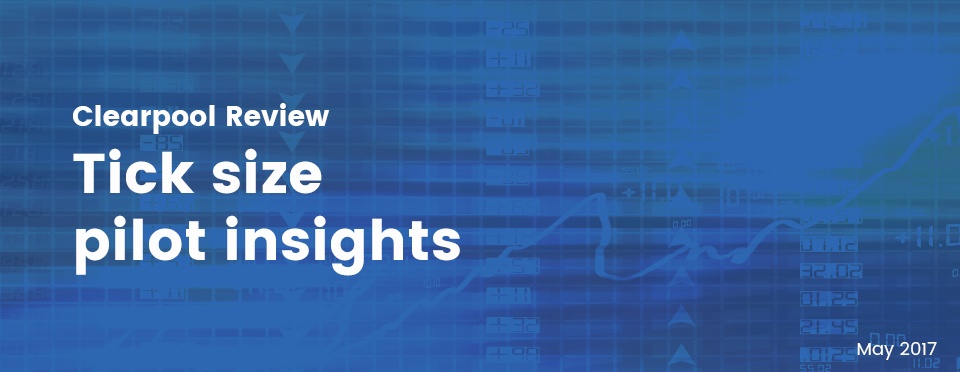We’ve released our insights on the Tick Size Pilot (TSP). We’ve analyzed our data to assess market structure changes as a result of the pilot, as well as the performance of our algorithmic strategies.
What we’ve found was quite different than what others found in terms of performance. While most who’ve analyzed the pilot can agree on certain market structure changes, like spreads and quotes have increased and market volumes have shifted venues. None of the publically released studies we have seen, except for Clearpool has seen a 10% improvement in impact fees and 20% improvement in trading costs.
We were able to recognize the above improvements because our algorithms naturally respond to liquidity. Our opportunistic logic sources liquidity without bias and inhibition, effectively accessing liquidity wherever and whenever it presents itself.
What might be inhibiting others from recognizing similar performance could be their prioritization of proprietary dark pools, or sitting in a queue at a venue and waiting for the rebate, or simply the configuration of the routing protocol is not tuned to dynamically adjust to where liquidity is found. Any of these scenarios can create a missed opportunity to effectively source liquidity.
Because Clearpool is venue agnostic and we have no conflict of interest. Our algorithms can naturally go where the liquidity is without bias.
Our unbiased order routing allows us to source liquidity across all venues and adapt to market microstructure changes to maximize liquidity capture leading to these quantitative results.
I invite you to view the full results here.
I encourage our clients to reach out to your relationship manager to discuss TSP.
Not a client, request a demo of the Clearpool Algorithmic Management System and learn how we can help.
